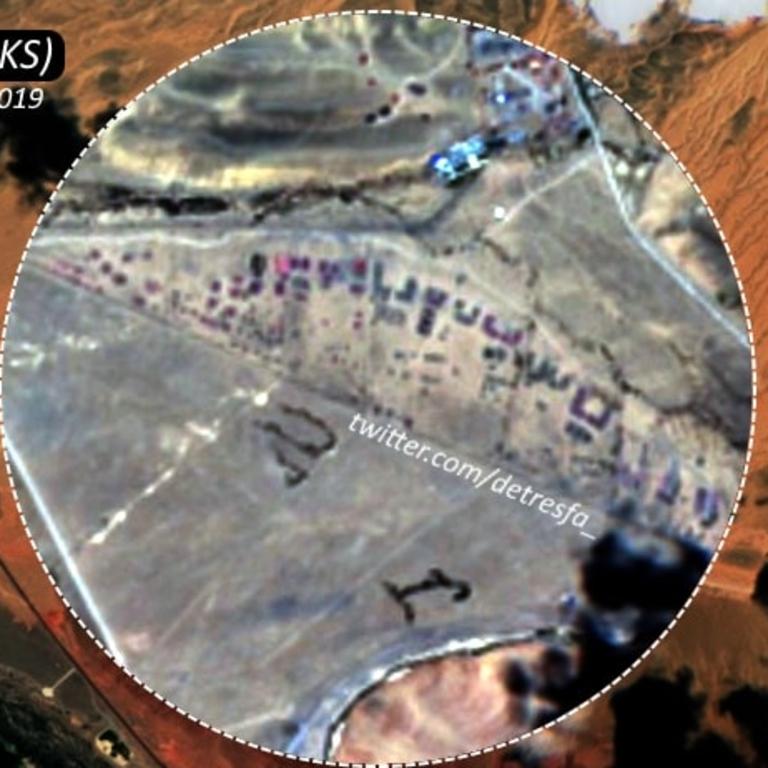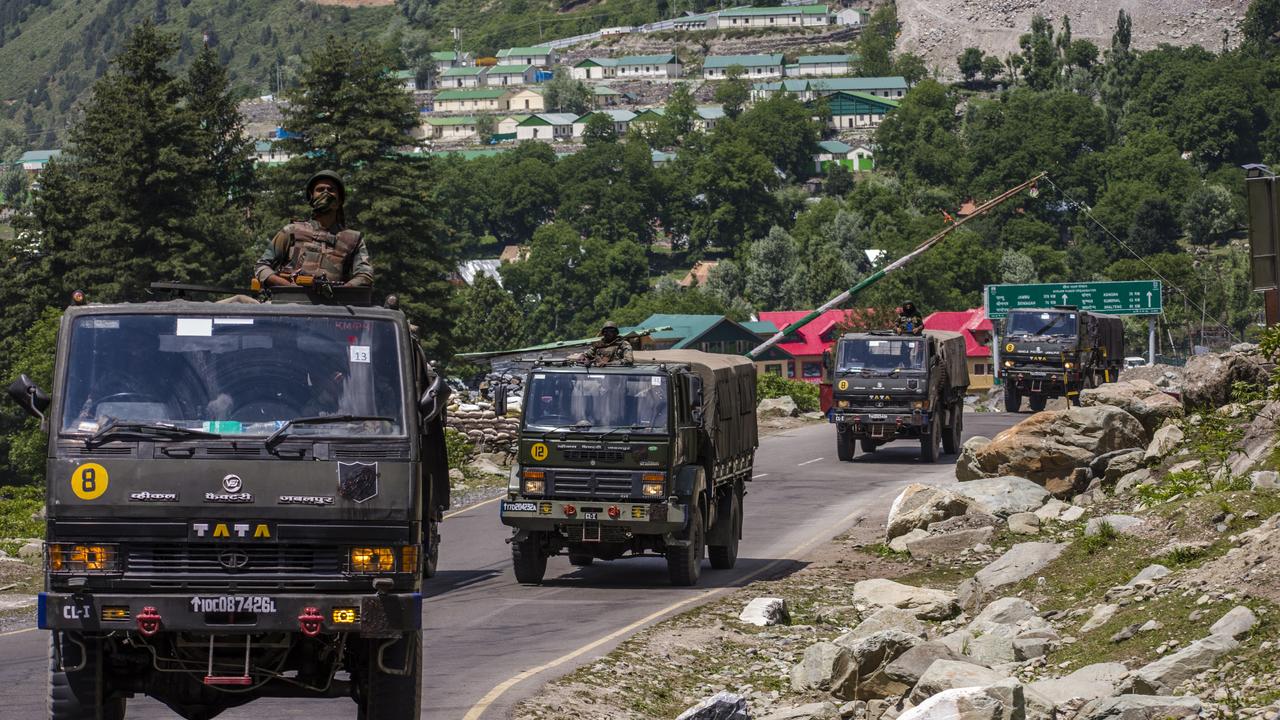China caught stockpiling military equipment on India border amid tension
China promised to de-escalate the conflict on its most volatile border, but these photos show that its intentions may be a lot more dangerous.
Satellite photos appear to show China massing troops and equipment on its mountainous border with India following a violent clash last month – despite promises to de escalate the conflict.
Indian media is citing defence sources – backed up by commercially available imagery – as saying “a large concentration” of troops and equipment is being assembled in the Akasi Chin region of occupied Tibet.
It was here in May that a bloody battle with iron bars and batons between border troops resulted in the deaths of about 20 Indians and an unspecified number of Chinese.
Tensions remain high despite both sides agreeing to retreat to previously occupied areas.
But Indian news service The Print says the new troop movements are “making the Indian Army cautious about the disengagement process”.
RELATED: China’s mysterious ‘dark fleet’ exposed

Beijing’s troops withdrew after a failed attempt to push past previously agreed boundaries in the mountains between India, China and Pakistan. Talks between the two sides have so far produced a de-escalation, but little agreement.
“There is a fear that the People’s Liberation Army (PLA) is intentionally delaying the disengagement process to sustain it till winter and then open a new front, possibly in the Northeast,” the report reads.
DISTURBING SCENES
Indian media says claims by government sources that some 5000 Chinese troops and their combat gear had been moved into the Himalayas were being supported by commercially available satellite imagery.
Pictures released on social media from sources such as the European Space Agency’s Copernicus Earth Observation system are being interpreted as exposing the build-up.
India’s own spy satellites, EMISAT, reportedly detected the movements earlier this month.
RELATED: China’s terrifying new ‘honey trap’ scheme

Large arrays of tents and temporary parks of heavy vehicles have appeared at Shiquanhe in Tibet. Troops may be using the site to acclimatise to the lower oxygen content of the high altitude region in readiness for future operations once the northern winter lifts.
Also visible on commercial satellite photos are a series of new helicopter landing pads.
India has also reportedly begun to prepare for winter, rushing fresh supplies and equipment to its border forces before they are isolated by the weather.
“China has built up (troops) in large numbers. We, too, have brought in a large number of troops into the Ladakh sector. The talks are very protracted and it seems China is intentionally dragging them,” The Print quotes a government source as saying.
“China no longer enjoys the surprise factor. They had the first-mover advantage in Ladakh initially but they have been countered there and everywhere now.”

Much speculation surrounds Beijing’s border push. Some analysts argue it appears part of a general effort to secure all of its borders. Others point to recent Indian road and bridge building efforts, themselves intended to match recent Chinese infrastructure works.
“Controlling the source and course of rivers that run from Ladakh also provides a great deal of environmental security for China, as the Himalayan mountains in the region are an important source of water to the areas below them on either side,” says Stratfor analyst Sim Tack.
HIGH CONFRONTATION
Previous satellite imagery taken shortly after the May-June confrontation appeared to show some 10,000 Chinese troops crossing the Line of Actual Control (LAC) to seize disputed territory in the ‘no-man’s land’ beyond.
After the clash, flooding in the Galwan Valley appears to have forced the Chinese troops to retreat to their staging area.
This was but the most dramatic confrontation, with other incidents being reported at Pangong Lake in the Hotsprings area and near Kaku La in Sikkim district.
With news of the #IndianAirForce & #IndianNavy participating in air deterrence activity along the #LadakhBorder & the arrival of #India's #Rafale fighters, here is a composite map of #China's current aerial capability in the region pic.twitter.com/2MmlXQIerm
— d-atisâ˜ ï¸ (@detresfa_) July 24, 2020
“There is credible evidence to suggest that both China and India have (since) significantly reinforced their positions on their respective sides of the de facto border,” an International Institute of Strategic Studies (IISS) states.
In May, commercial satellites revealed towed artillery and tanks, probably from the PLA’s 6th Mechanised Division, gathering at military facilities in Tibet.
However, the study’s author, Research Fellow for Defence and Military Analysis Henry Boyd, did not believe these initial deployments were cause for concern.
“The current clashes should be seen as a continuation of a trend of incidents that occur each spring, when snow in this mountainous region thaws and opportunistic gains can be made on either side of the disputed border,” Mr Boyd wrote.
Enduring the winter will be a major test for forces on both sides of the Line of Control. The first to reactivate will likely hold the upper hand.
“China initially launched its military push into Ladakh in May, when the region’s snow- and ice-covered valleys had just started to thaw,” Mr Tack says. “But as winter begins to settle in November, the entire region will once again be covered in deep snow, which will make a continued build-up of both Chinese infrastructure and troops in Ladakh difficult.”
Jamie Seidel is a freelance writer | @JamieSeidel




